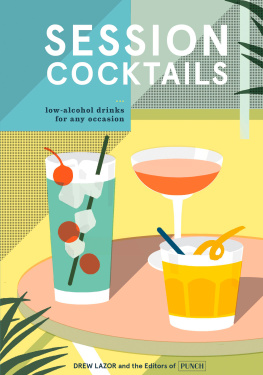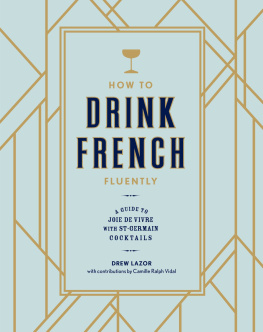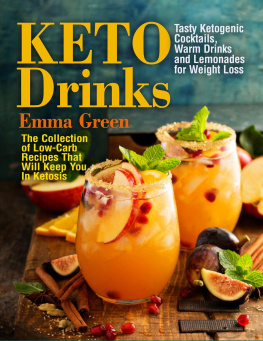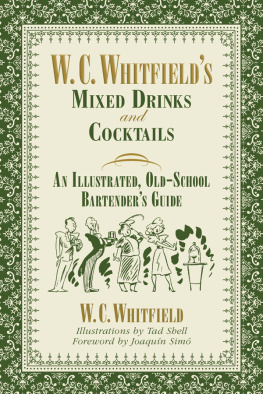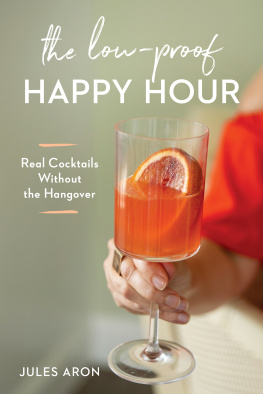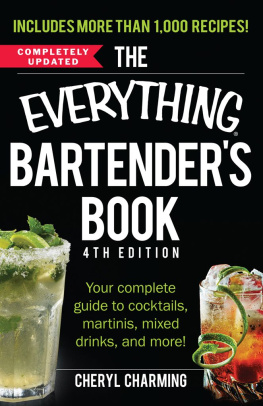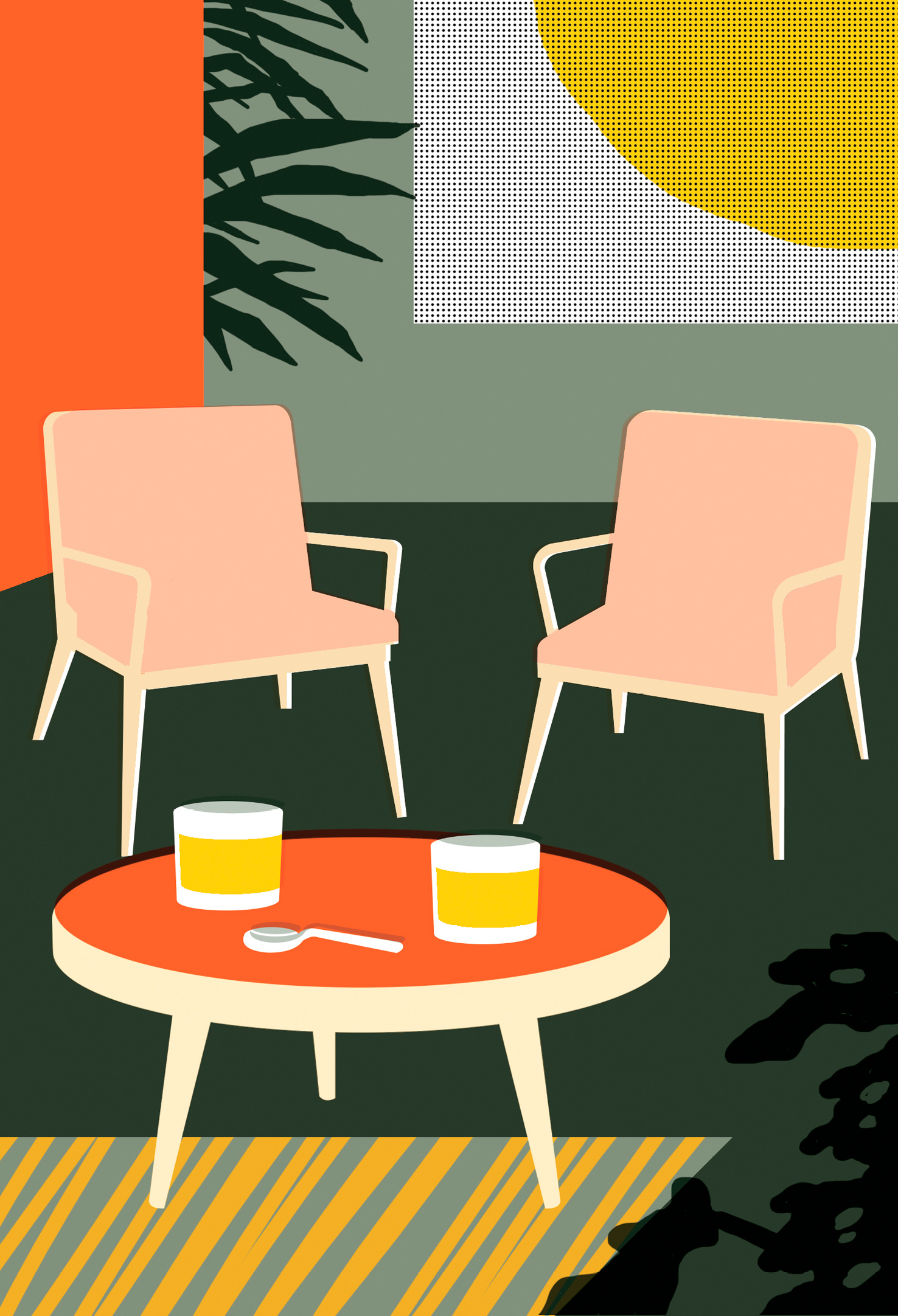Acknowledgments
First, I would like to praise the amazing bartenders so vital to the creation of this book. Without your talent, creativity and intellect, Session Cocktails would simply not exist. Thank you for fielding my never-ending calls, texts, emails and weird Facebook messages with such grace. Special shoutouts are in order for Natasha David, Phoebe Esmon, Greg Best, Morgan Schick, Eric Alperin, Richie Boccato, Dan Greenbaum, Jeff Beachbum Berry, and Alex Day for contributing your expertise beyond the recipes.
Thank you to Martin Doudoroff, Eric Seed, Martyn Cornell, Dinah Sanders, David Wondrich, and Dale DeGroff for offering such valuable perspective, whether it was through your writings or our conversations. Thank you to Jerry Thomas, George J. Kappeler, Cocktail Bill Boothby, Harry Craddock, W.C. Whitfield, Charles S. Mahoney, Hugo R. Ensslin, Stanley Clisby Arthur, and Albert Stevens Crockett for creating books that double as time machines. Thank you to Cocktail Kingdom in New York City for allowing me to raid your library.
I feel so lucky to be part of the PUNCH family. To Talia Baiocchi, Patron Saint of Neurotic Cocktail Writers, you are seriously the best. Thank you for not killing me as of press time. Bianca Prum, your warmth and professionalism are unrivaled. Lizzie Munro, I am obsessed with your absolutely stunning photography. Allison Hamlin and Chloe Frechette, thank you for answering the many questions I often have about your Instagram Stories.
To Anne Goldberg, Margaux Keres, Mari Gill, and Jane Chinn of Ten Speed Press, your vision and guidance have set an unbelievably high standard for a publishing team.
Finally, to Michelle, I love you and thanks for putting up with me. I am trying really hard to stop passing out in front of my laptop on the couch while writing.
EASY
DRINKING
THROUGH
HISTORY
WHILE LIQUID EXAMPLES THAT FIT the session-cocktail criteria have been around as long as drinking itself, that doesnt mean these drinks have always existed as a conceptual category. Rather, they grew out of multiple autonomous traditions, at different times, in different regions, for different reasons. All of this ancestry feeds into our modern understanding of the session cocktail and how it fits into contemporary drinking habits.
The term session, as it pertains to alcohol, seems to have originated in England, where it means a prolonged bout of drinking, with beer being the most common beverage of choice. If youre stationary at the pub with friends for more than a few, congratulationsyou are a participant. Some historians speculate that this usage came about in the World War I era, when the British Defence of the Realm Act of 1914 dictated that pubs could operate only in two daily windowsthe midday and evening sessionsshutting down in between.
The shift from a noun describing consumption to an adjective describing whats consumed is a newer development. In his book Strange Tales of Ale , Martyn Cornell points out that fellow Englishman and beer writer Michael Jackson used session as a descriptor to refer to low-ABV brews, typically below 5 percent, as early as 1982. Session cocktails , on the other hand, are too far-reaching to lasso into such a neat definitional knot. For starters, unlike the situation with those guzzle-friendly beers, there hasnt always been a catchall word out there to apply to comparable choices on the liquor side of the aisle. In 2013, writer Dinah Sanders offered the term shim, a nod to those wedges one might use to stabilize a wobbly kitchen table. She was alluding to the idea that these drinks, lower in alcohol than many bar standards, will keep you level, too.
Session cocktails may be inspired by moderation, but that doesnt mean theyre about deprivation. Rather, they are vehicles for a new form of spirituous expression. They are made with wines conventional, aromatized, and fortified. They are made with herbal liqueurs and bitter amari. Some are built around strong spirits in appropriately modest proportions. Some are even frozen. They come in all manner of glasses, decked out with all manner of garnishes, and are appropriate for all manner of occasions. To get a tangible idea of where this all came from, it helps to take a look back into cocktail history.
First, consider the cobbler. Rising to prominence in the mid-nineteenth century, it consists of nothing more than a modest portion of alcoholcommonly sherry, port, or champagnecombined with sugar and fruit and served over crushed ice. The ubiquity of wine-based drinks in that era, so integral to the spread of cocktails like the cobbler, was born of access. European wine was plentiful and affordable in the States, and the nascent American wine scene came nowhere close to competing. As a result, imported products, particularly from Spain, Italy, and France, became the standard-bearers in both bars and homes, and that influence is still evident today.
Along with its close relative the julep, the cobbler is credited with popularizing the concept of ice-cooled cocktails in America. This novelty, combined with its goes-down-easy DNA, meant that the cobbler was not only present, but prevalent. It had a huge period of high-profile popularity, says drinks historian Martin Doudoroff. Indeed, praise for the cobbler appears in seminal texts like Jerry Thomass 1862 book How to Mix Drinks, or The Bon-Vivants Companion (a delicious potation) and Harry Johnsons 1888 book New and Improved Bartenders Manual , which cites the cobbler as the most popular beverage in the countrya very refreshing drink for old and young. The Sangaree, a combination of port, sherry, or madeira with water, sugar, and nutmeg was also well documented in those times.
Another style of drink from that era that fits under the proto-session umbrella is the cup. The 1869 book Cooling Cups and Dainty Drinks , by William Terrington, dives deep into this somewhat broad category that typically encompasses wine-based drinks augmented with various fruits, herbs, and other adjuncts. The cups build is similar to that of most large-format punches, but its typically served individually. The most popular example of this classification is the easy-drinking Pimms Cup (), a frequently cited session source recipe.
Cobblers and cups were not the only wine-based beverages to rise to prominence during this time period. Italian (sweet) and French (dry) vermouths flooded the market in the latter part of the nineteenth century, and drinks relying on them as a base quickly became canon. Their relevance only expanded as American drinkers sauntered into the twentieth century. Consider the Bamboo: developed sometime in the 1880s and popularized at Yokohamas Grand Hotel by Louis Eppinger, a peer of Jerry Thomass, the Bamboo is commonly cited as an inspiration for modern bartenders who want to make fully developed cocktails that are lower in alcohol. Equal parts French vermouth and sherry, topped with two types of bitters, the Bamboo (), an equally relevant riff, swaps in sweet vermouth for dry, and ups the amount of sherry.
Throughout the nineteenth and early twentieth centuries there were a number of variations on low-proof, stirred vermouth cocktails. The Old Hickory () is one such example. Allegedly loved by President Andrew Jackson, this equal-parts combo of sweet and dry vermouths, with orange and Peychauds bitters, rose to prominence via New Orleans bartenders in the early 1900s. Its also important to note that many of the drinks that have become part of the booze-forward pantheon, like the Manhattan and the martini, have lower-octane roots. In fact, Cocktail Bill Boothbys 1900 book World Drinks and How to Mix Them features recipes for both these drinks with a ratio of equal parts vermouth to spirit. From the beginning, people were trying all the different possible ratios, says Martin Doudoroff.
Next page
